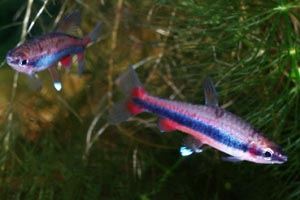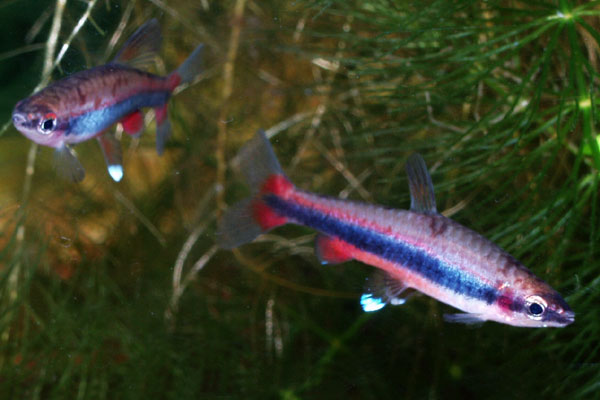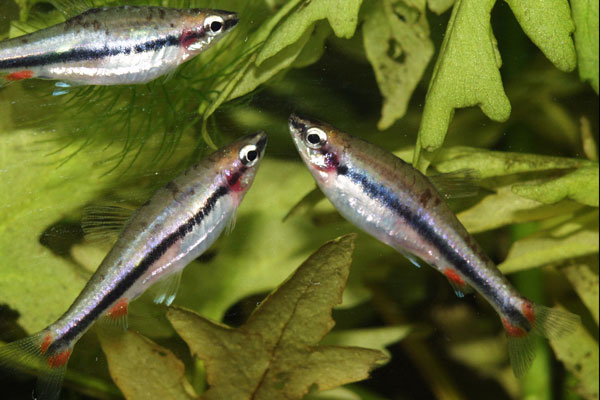

Species Profile | Images | Breeding Report | Similar Species

(Other members of the genus Nannostomus)
ADULT SIZE: 7 cm
WATER CONDITIONS: Not critical
TEMPERATURE RANGE: 23-27 C
FOOD: Feed Nannostomus beckfordi small live-foods and fine grade dried foods
DISTRIBUTION: This species comes from Brazil, Guyana
SEXUAL DIFFERENCES: Males are slimmer and more significantly red than females of the species.
AQUARIUM CARE: A densely planted tank is preferred by this species, replicating the soft water thickets in which they are found in the wild. This is a very active species, and a very attractive one too. Sparring males look spectacular, and will position themselves side by side in a terrific shaking display.
BREEDING: Breeding requires the fish too be well fed - vitamin deficiency can be a problem with this species, so it is advisable to give them an as varied diet as possible. Eggs are attached to plants, and require infusoria as a first food
Have you bred Nannostomus beckfordi? Why not fill in a breeding questionaire?, or examine existing Nannostomus beckfordi breeding reports
Other members of the genus Nannostomus
Other characin species

Sparring males look spectacular

Females are less colorful than males
BREEDING: Breeding requires the fish too be well fed - vitamin deficiency can be a problem with this species, so it is advisable to give them an as varied diet as possible. Eggs are attached to plants, and require infusoria as a first food
Have you bred Nannostomus beckfordi? Why not fill in a breeding questionaire?
Sorry no records.